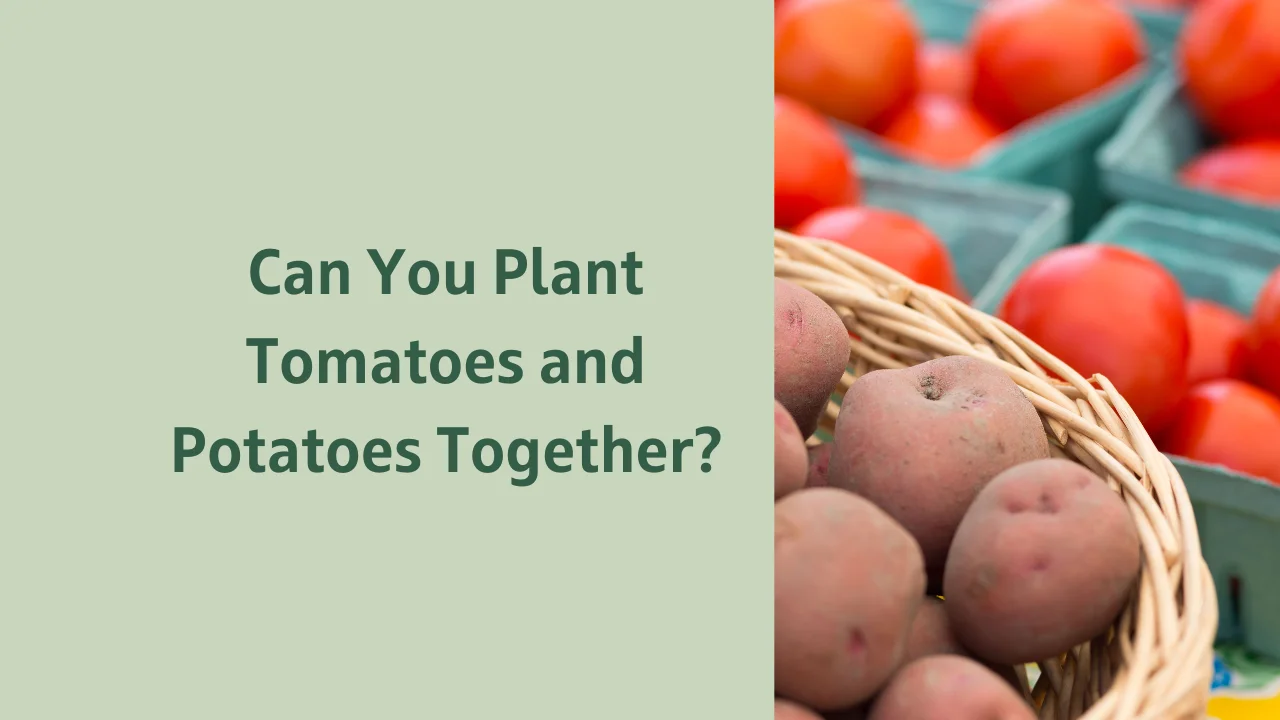Tomato and potato plants belong to the same family, i.e., the nightshade family. So, the question is whether we can grow both plants together. Practically speaking, planting the same family of nightshade plants together is not a good idea. It causes many challenges.
In short, you should avoid planting tomatoes and potatoes together. They both require different pH of soil for their plantation. Both plants are prone to similar diseases like Early Blight and Late Blight, which can easily spread.
But still, if you are willing to grow both plants together, it is possible to plant them together with some disease control preventive measures.
Maintain a favorable growing condition for both plants and also take preventive steps to reduce the risk of diseases, and you will be able to grow both plants together efficiently.
Reasons Not To Plant Potatoes and Tomatoes Together
There are so many reasons for not planting tomatoes and potatoes together, but one of the major reasons is Soil pH which I have discussed below in detail.
Soil pH

Tomatoes require little acidic soil with a pH ranging between 6.0 to 6.8, which is common for most garden plants. At the same time, potatoes prefer more acidic soils ranging in pH from 4.8 to 5.5.
A logarithmic (Exponential) scale is needed to measure the soil’s pH level. 5.0 pH is ten times the acidic pH of 6.0. Both tomatoes and potatoes would be endangered if planted in the same pH soil.
Most people often wonder why the nutrient levels and pH of the soil are important to grow any plant. So the soil nutrition content is dependent on its pH level only. You can also go through this research to better understand the relationship between soil pH and nutrition.
For example, tomatoes need comparatively more calcium than potatoes. And low content of calcium is found in soil pH of 4.8. So this type of soil is suitable only for potatoes, and tomatoes won’t grow fine in such soil; rather, it would lead to Blossom End Rot (a tomato disease due to scarcity of calcium).
Your plants would become more prone to various diseases because the main reason for disease in the plants is the pH imbalance in the soil and not the scarcity of nutrients.
So You can easily say that the soil’s pH difference is the vital reason for not planting tomatoes and potatoes together.
Growth and Harvesting
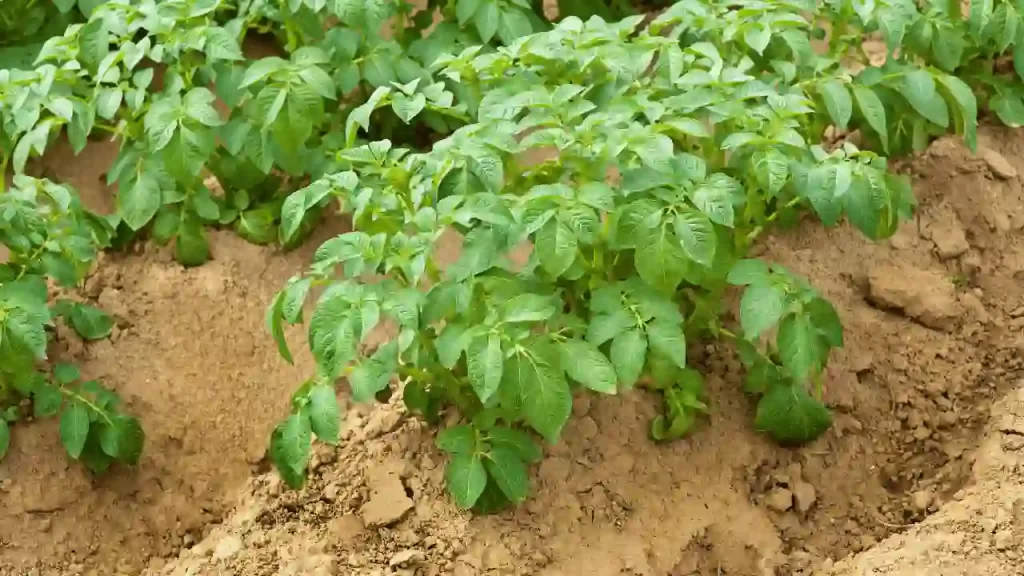
If you are growing potatoes and tomatoes together in the same soil, you might face challenges growing fresh, undamaged, and healthy tomatoes until maturity.
Please note that potato leaves grow above the ground, but the potatoes themselves grow underground.
Growing potatoes too close to growing tomatoes can interrupt the growth of roots of tomatoes as the potatoes grow larger underground. It can even damage the roots of your tomato plants.
Planting both plants attract pests which can also increase the risk of transmission of many diseases.
Why Are Tomatoes And Potatoes Bad Companions?
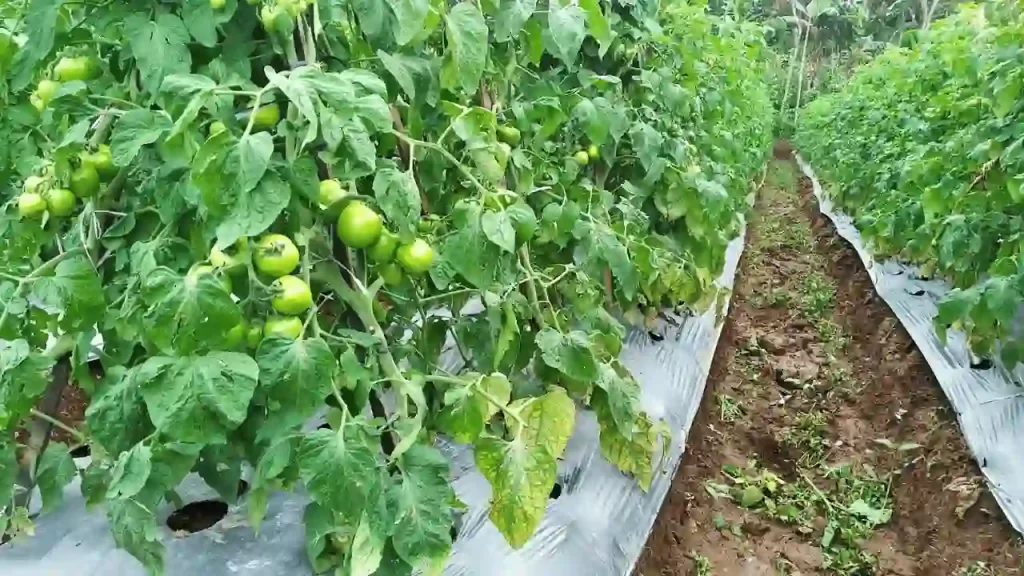
Tomatoes and potatoes are often paired commonly in not only vegetable gardens, but they are paired in kitchens. They are very easy to use in the kitchen, and you can also cook many delicious recipes with these veggies.
But sadly, they can not be grown together and are not good companion plants or root vegetables.
It is strongly recommended not to plant these two veggies together as it increases the risk of ruining both plants and other edible plants already in your garden.
Pests and diseases are the vital reasons for making them the worst companion plant. As potatoes and tomatoes belong to the same nightshade family, they are highly prone to similar diseases and the same pests too. The most damaging ones are Early Blight and Late Blight.
These diseases can easily attack both plants along with other plants in the same space in your garden if planted together.
They start competing for soil nutrients if you have planted potatoes and tomatoes in the same soil. As a result, both plants would not get the proper nutrients needed for their growth and development, leading to low growth and poor harvest.
Harvesting also becomes challenging and problematic for many gardeners too. The potatoes are required to be pulled during harvesting time.
If they are planted close to the tomatoes, the root system of tomatoes can be disturbed and becomes impossible to resolve.
What Should You Do About It?
Firstly, it is strongly recommended not to plant both potatoes and tomatoes together. But still, if you want to opt to grow both plants in the same garden due to lack of space, you can still consciously fulfill a few conditions diligently and end up growing both crops together without harming any of them.
But I recommend not planting other plants in the same side vegetable garden where you want to grow potatoes and tomatoes.
How To Plant Tomatoes and Potatoes Together?
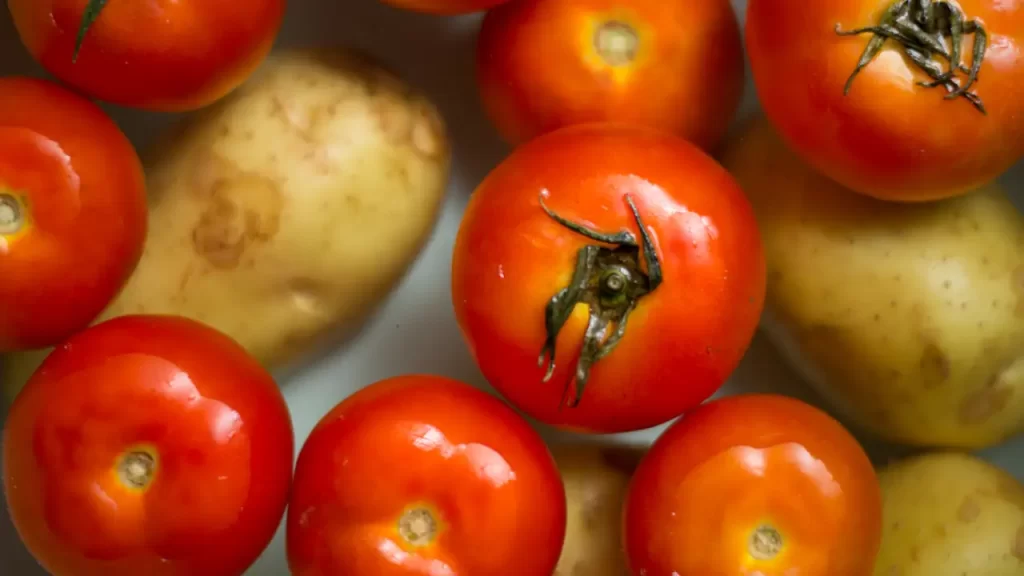
Plant Disease Resistant Varieties
Our horticulturist and agriculture developed some tomato varieties which are resilient to many diseases.
While planting disease-resistant varieties of tomatoes, you can reduce the risk of spreading many pests, harmful insects, and diseases, which is the main concern for planting potatoes and tomatoes together.
The most common and dangerous disease for both plants is blight. So you should especially opt for the varieties resilient to blight disease.
It would not totally control the blight issue, but these plants are less susceptible to blight. These special varieties are good for disease resistance, high yield, rapid growth, and quality fruit production.
You can purchase the tomato seeds with codes on their level. The type of disease resistance is also specified on the packet of tomato seeds.
Some varieties are EB Early Blight, LB Late Blight, V Verticillium Wilt, F Fusarium wilt, N Nematodes, and A Alternaria. T Tobacco Mosaic Virus, TSWT Tomato Spotted Wilt Virus.
Space Them Correctly
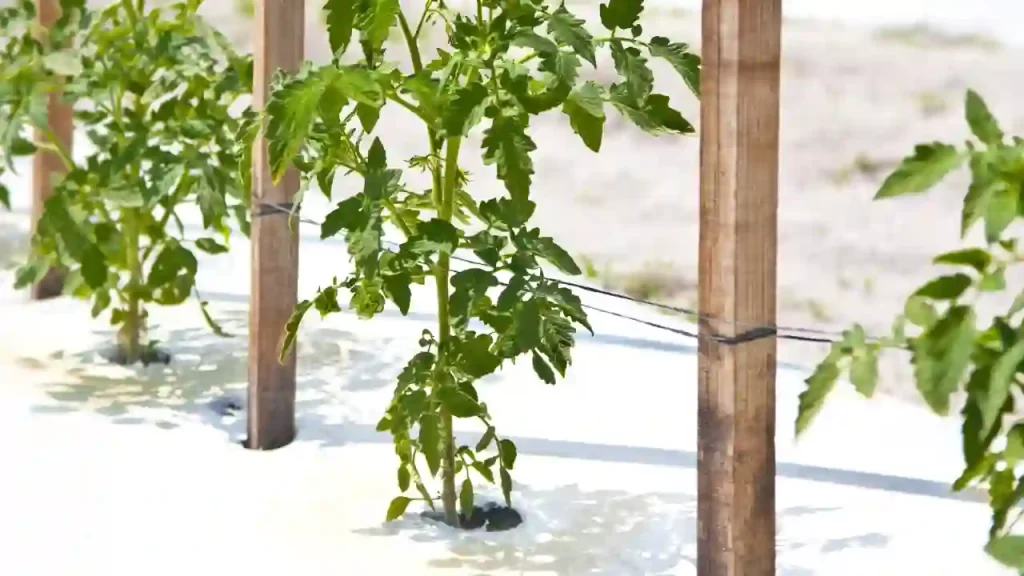
Regular spacing between the plants is not enough to control the spread of diseases.
To maintain good air circulation between the plants, maintain at least 5 feet of distance, but it would be best if you can manage to maintain 10 feet of distance.
It would also prevent the tomatoes, especially the indeterminate varieties from getting shaded due to the leaves of the fully grown potatoes.
Both tomatoes and potatoes love full exposure to sunlight. If they are shaded somehow, you will get a very low yield for both crops.
Plant In Raised Beds
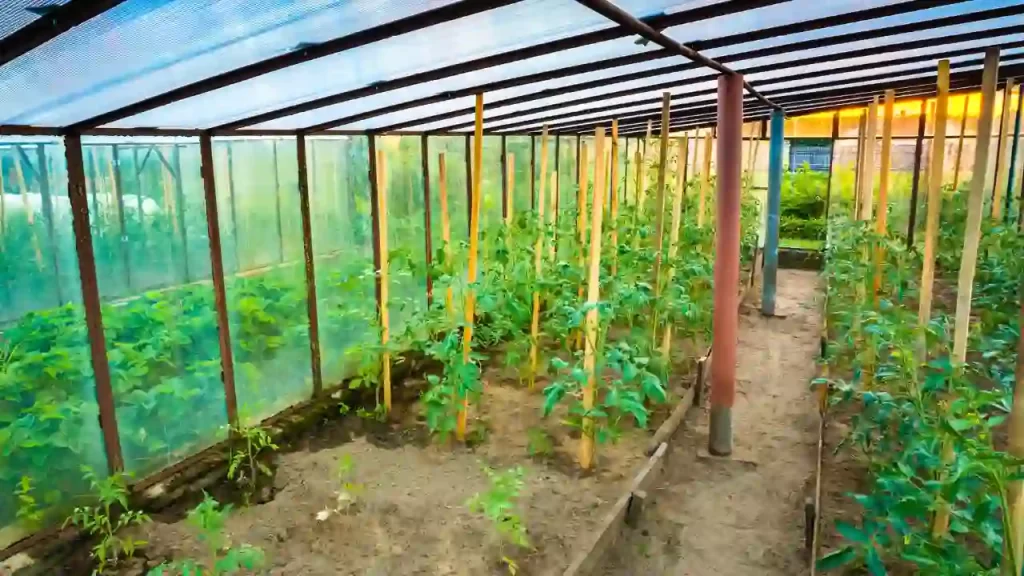
The root system of tomato plants can be hampered even after maintaining proper space between the plants.
Planting them close to each other can lead to competition for nutrition between the plants, which can hamper both plants’ growth. It also impacts fruit development.
It means that harvesting potatoes would forcefully hamper the root system of the tomatoes, which in turn interrupts the growth and yield of the tomato plants.
So plant both plants in separate raised beds. Even if the plants are close to one another, they are yet separated.
With this method, you can plant both tomatoes and potatoes in separate soil, ending the nutrition competition and resolving the harvesting problem. And you can also closely monitor both plants even after keeping them close to one another.
Water The Soil, Not The Leaves
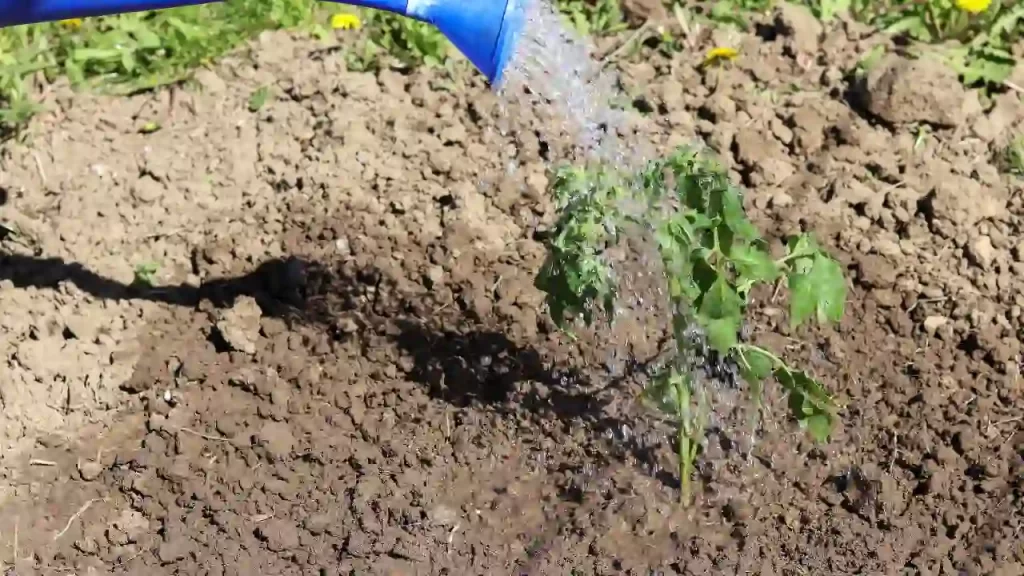
Plants are more susceptible to getting various diseases in wet and humid conditions. If the leaves and fruits remain wet for a longer period and water sits on them, the plants can attract more fungal or bacterial diseases and spread to other plants in your garden.
Thus, adopting the correct watering technique for your plants is very important. Avoid overhead irrigation and use soaker hoses and drip irrigation while watering.
Be cautious about water in the base of the plant, shallow roots, and soil, and not on the leaves and fruits.
Direct exposure to sunlight and keeping the plants at an ideal temperature leads to the evaporation of water on the plants and helps to keep your plant dry.
It saves your plant in rainy climates when your plants necessarily get too much water on their leaves and fruits.
Check For Diseases And Pests Often
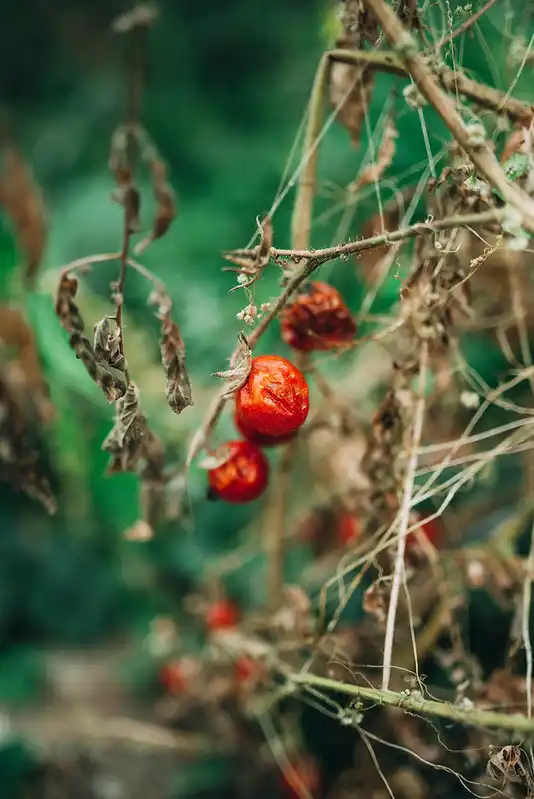
You need to develop the habit of scrutinizing your plants thoroughly for any pests and diseases.
If you spot any pests and diseases at the initial level only, it would be easy to control their spread to other plants and protect your harvest.
When you visit your garden to water your plants, carry a shear and thoroughly scrutinize the leaves of both plants.
Especially inspect the underside of the plant’s leaves and stems as the pests mostly love to stay there.
Just remove the pests and affected areas proactively and apply the disease spray to control them.
Ensure to sanitize your gardening tools after and before removing any pests and diseases, or they may spread the disease.
Summary
It is highly recommended not to plant potatoes and tomatoes together as they may harm each other, including other plants in your garden. But still, if you want to grow them together, try to plant resilient varieties of tomatoes with proper spacing between the plants and take all the preventive measures discussed in this article. It would help to grow disease-free healthy plants and decent harvest.
Frequently Asked Questions
What are the best potato companion plants?
Potato plants are compatible with many different companion plants, including beans, celery, corn, peas, and marigolds.
Beans provide nitrogen-rich soil for potatoes to thrive in, while their roots attract beneficial insects like earthworms that help aerate the soil.
Celery deters potato beetles while adding calcium and magnesium to the soil.
Corn provides a natural barrier, shading the potatoes from direct sunlight, and also attracts beneficial insects. Peas are a great nitrogen source for potatoes, and their roots promote better soil aeration.
Finally, marigolds can deter many pests that attack potatoes while adding helpful soil nutrients. They’re an especially attractive option if you’re looking for a beautiful, low-maintenance companion plant.
Not only do potato plants deter Mexican bean beetle, but they also repel their attacks against other legumes!
What should not be planted with tomatoes?
The brassica family, composed of vegetables such as cabbage, broccoli, cauliflower, kale, Brussels sprouts, and kohlrabi, can significantly stunt the growth of your tomato plant because they require similar nutrients to prosper. So, it would be best if you do not use these as companion planting with tomatoes.
